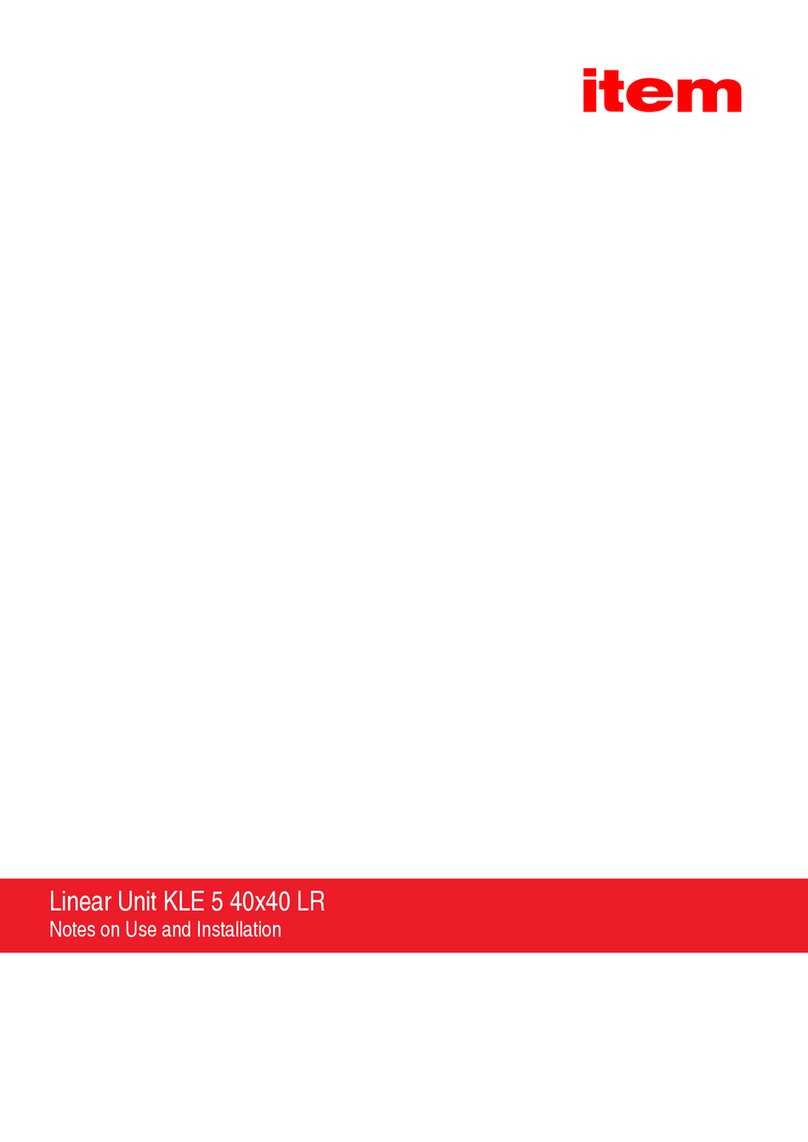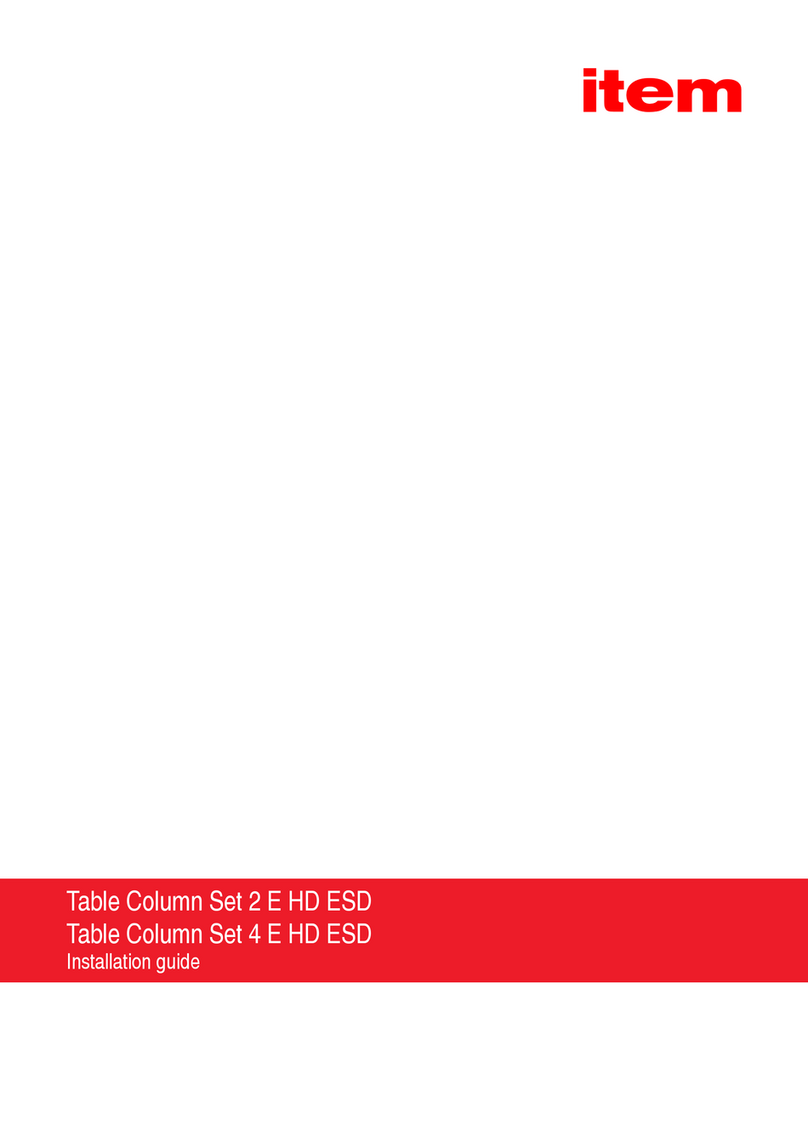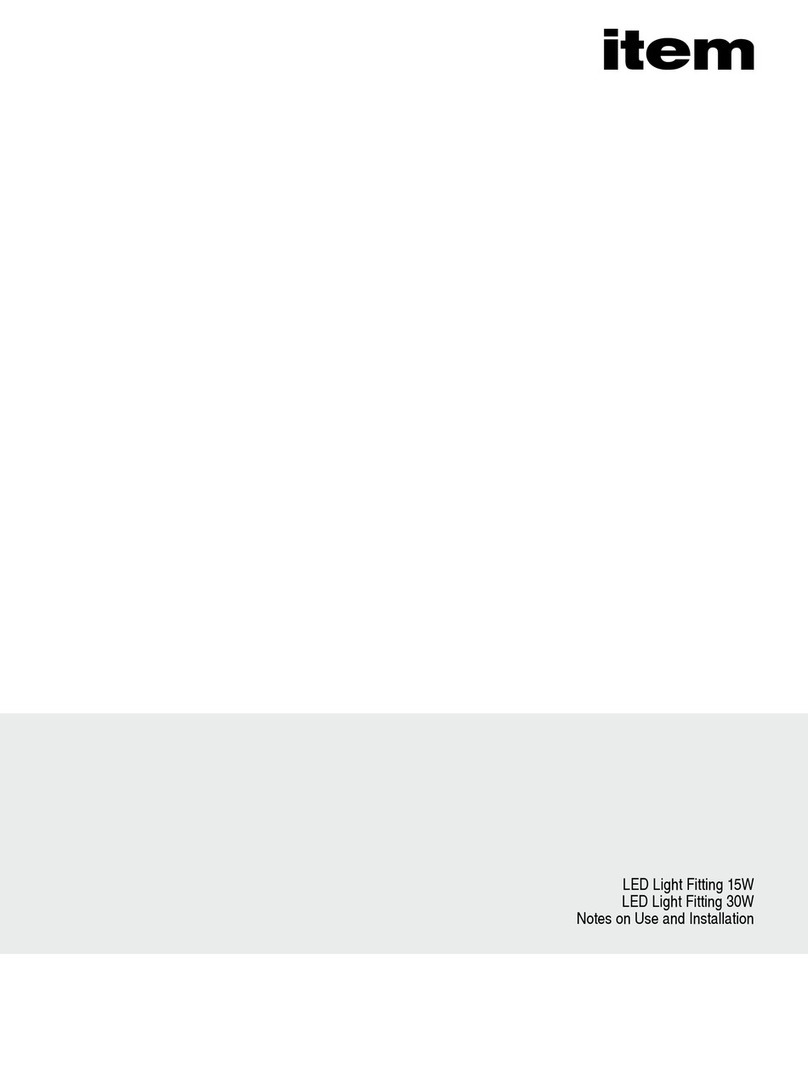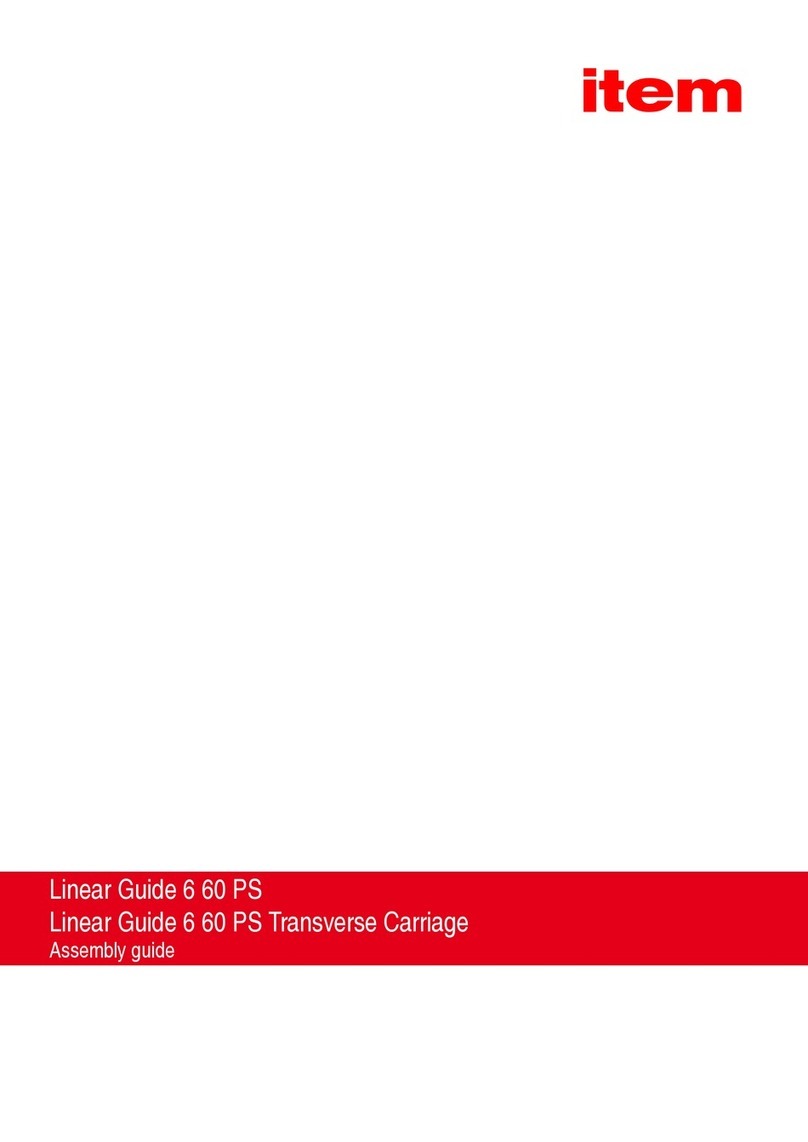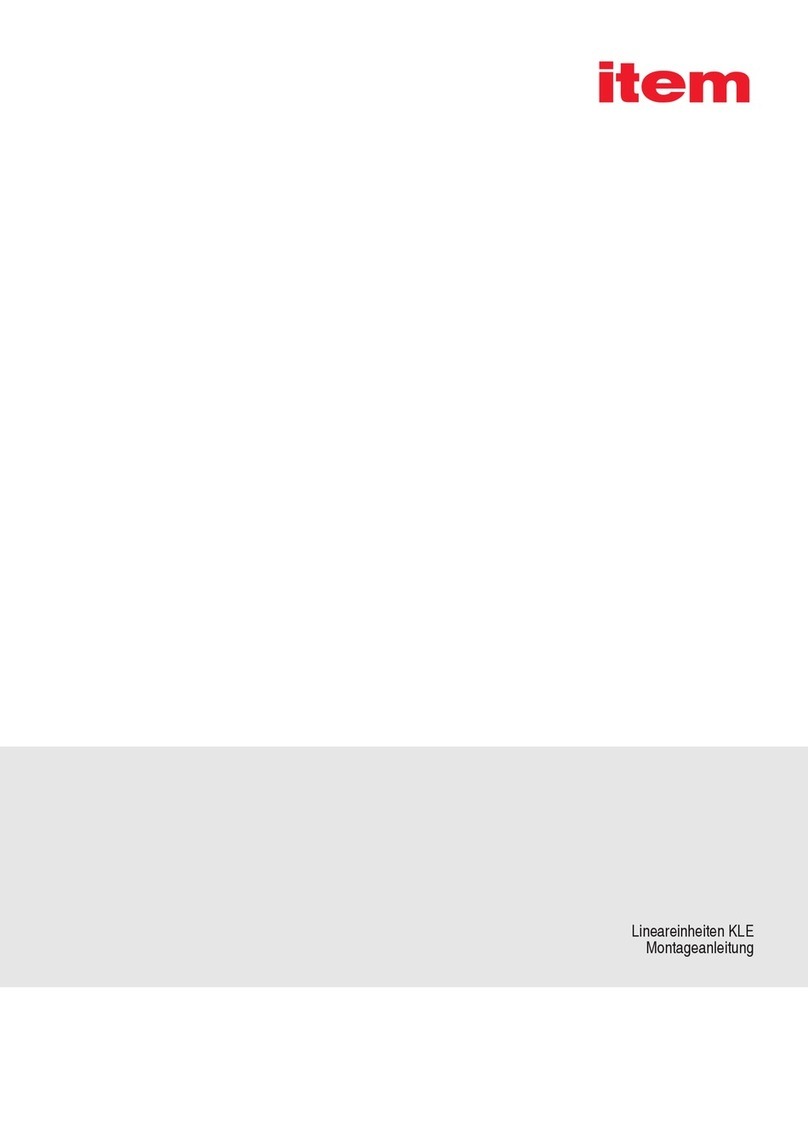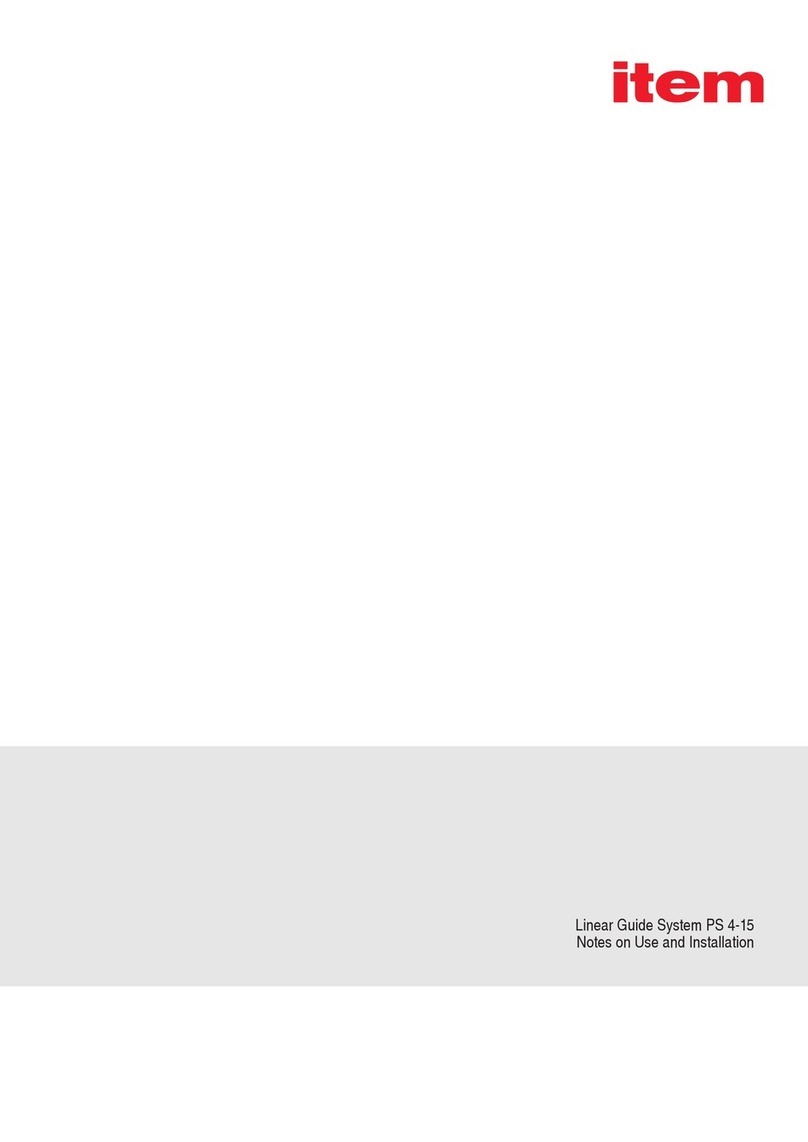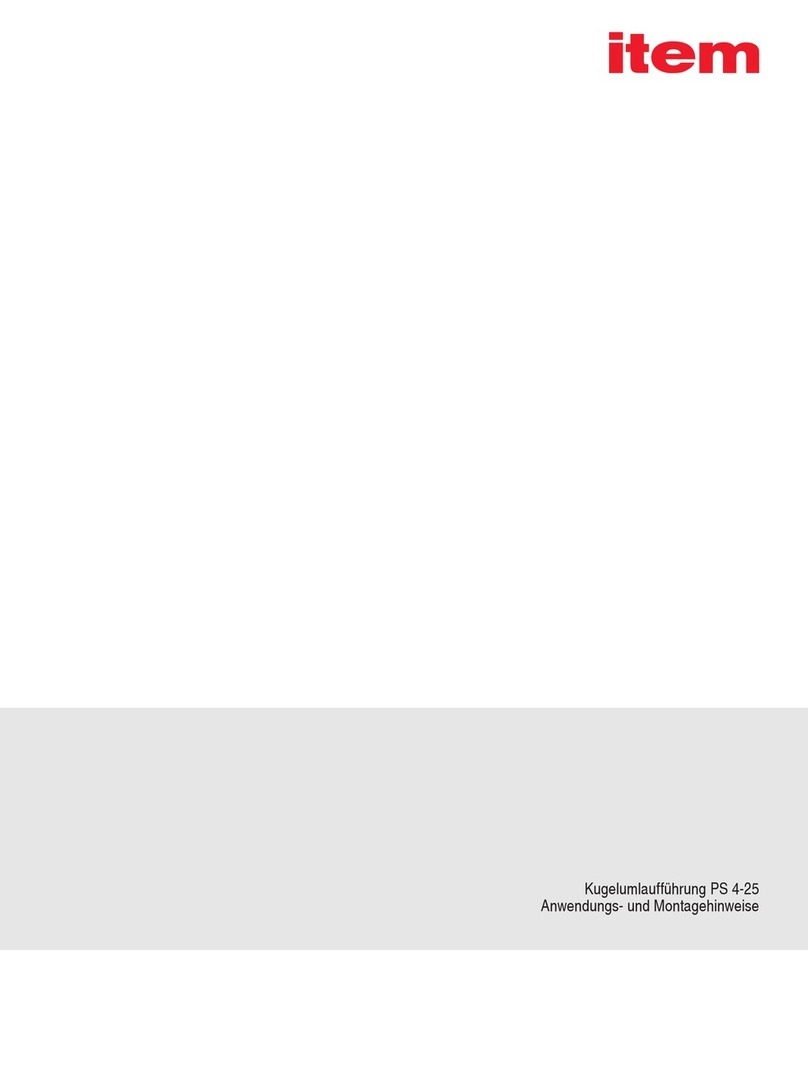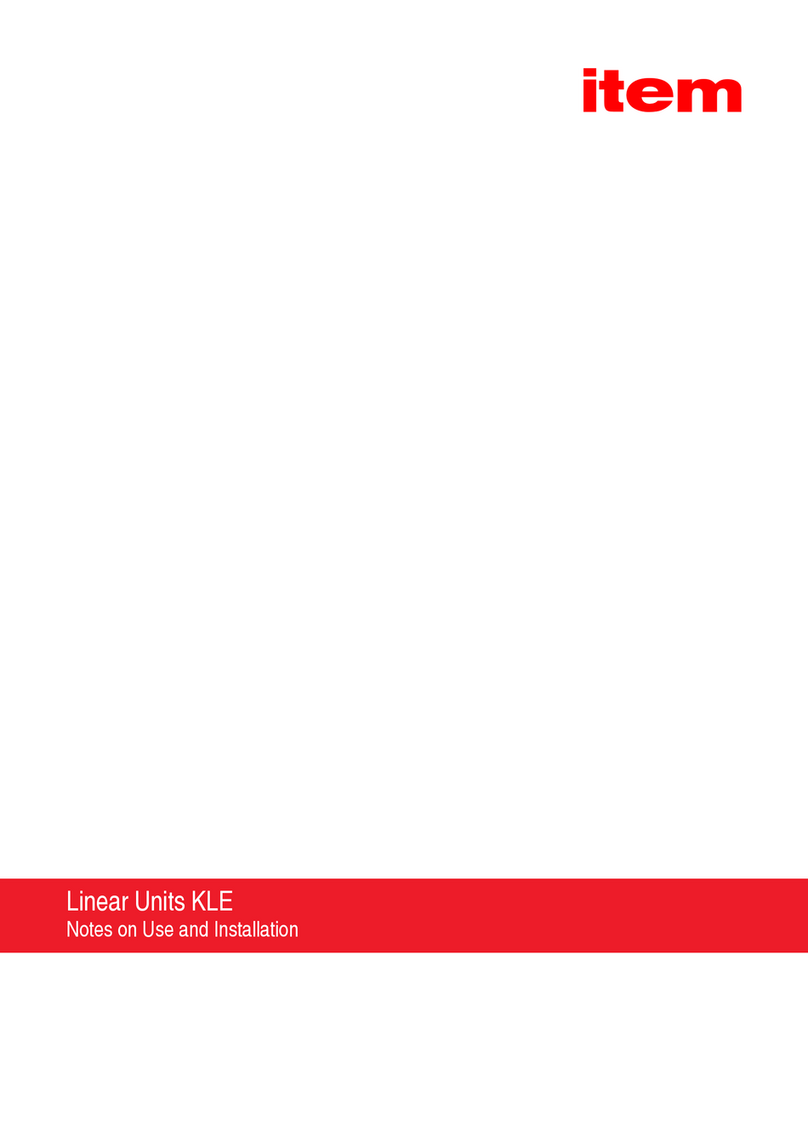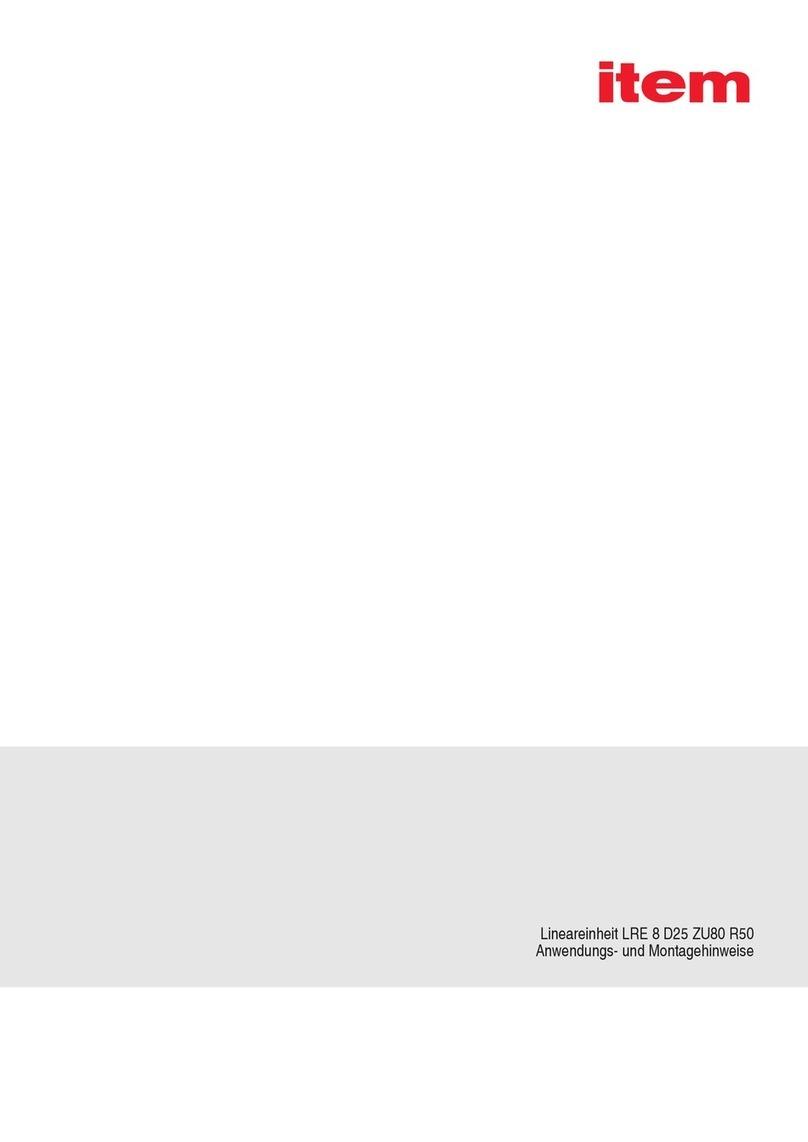
2
Symbols, safety
Meaning:
Important, safety information, recommendation
Maintenance
General safety information
Contents
The details and information in the installation guide are provided solely for
the purposes of describing the product and the assembly and disassembly of
variants of Linear Unit LRE 8 D14 80x40 KU 80. The text below usually refers
to these as the Linear Unit or LRE. This information does not discharge the
user from the obligation to carry out his own assessments and checks. It is
important to bear in mind that our products are subject to a natural process of
wear and ageing. These notes contain important information that will enable
you to use the product safely and appropriately. When sold, rented out or
otherwise passed on to another party, this product must be handed over with
the installation guide.
When installing, disassembling, operating and maintaining the Linear Unit, it is
important to ensure that all moving elements are secured so that they cannot
be switched on and moved unintentionally. Rotating and moving parts can
cause serious injury! You must therefore read and follow the safety instructions
set out below.
▪All work on and with the Linear Unit must be performed with “safety first” in
mind.
▪Always switch off the drive unit before you start working on the Linear Unit.
▪Ensure the drive unit cannot be switched on unintentionally, e.g. by affixing
warning notices at the activation point or by removing the fuse from the
power supply.
▪Do not place your hand within the operating range of the Linear Unit’s
moving parts when the unit is still switched on.
▪Fit guards and covers to the moving parts of the Linear Unit to ensure they
are not touched unintentionally.
▪Observe the regulations pertaining to accident prevention and environmental
protection that apply in the country and place of work where the product is
being used.
▪Use only products that are in perfect working order.
▪Failure to use original spare parts will invalidate the product warranty!
▪Check the product for obvious defects.
▪Use the product only within the performance range described in the techni-
cal data.
▪Ensure that all the safety equipment associated with the product is present,
properly installed and in full working order.
▪Do not alter or circumvent safety equipment, or render it ineffective.
The Linear Unit described here corresponds to the state of the art and takes
into account the general principles of safety applicable at the time this installa-
tion guide was published. Nevertheless, failure to observe the safety instruc-
tions and warning notices in this installation guide may result in personal injury
and damage to property.
We will assume no liability for any resulting damage or injury. We reserve the
right to make technical changes that represent technical advances. Keep these
installation notes in a place where they can be easily accessed by all users.
Observe the directions contained in the main user guide for the completed
machine.
The general safety information applies to the entire lifecycle of the partly
completed machine.
Symbols, safety 2
General safety information 2
Correct use 3
Improper use 3
Operating parameters 4
Preparation 5
Installation 5
Slide LRF 8 D14 160x160/200x160 6
Potential applications 7
Chain Reverse Unit 8 80 with Bore 7
Potential applications 7
Basic construction of the Chain and Chain Reverse Unit 8
Connecting Drive Set 8 40 D40/D15 9
Connecting Drive Set 8 D40/D15 AP/WP 60 10
Slide Stop LRE 8 10
Synchronising the iLMU 12
Maintenance 13
